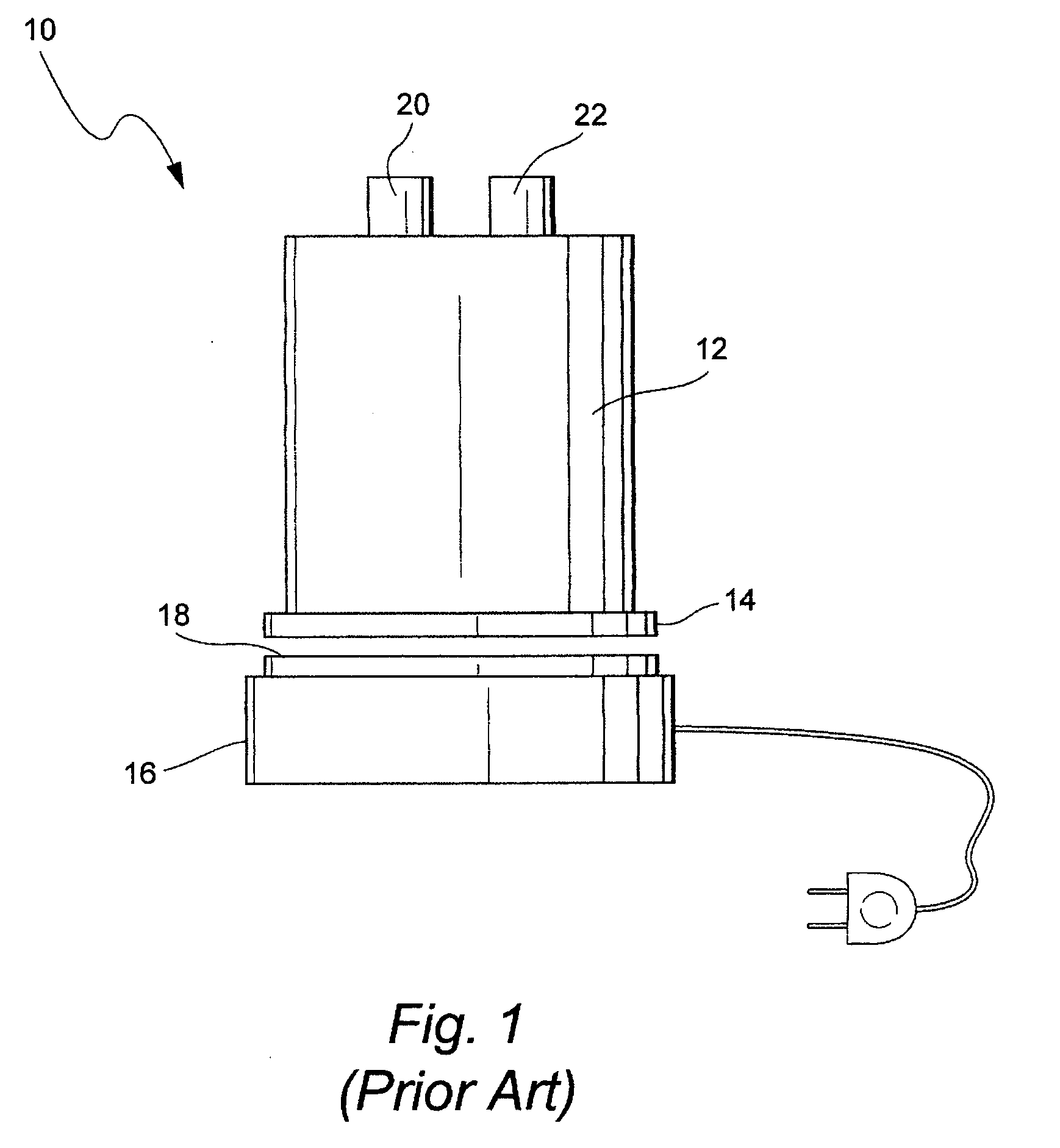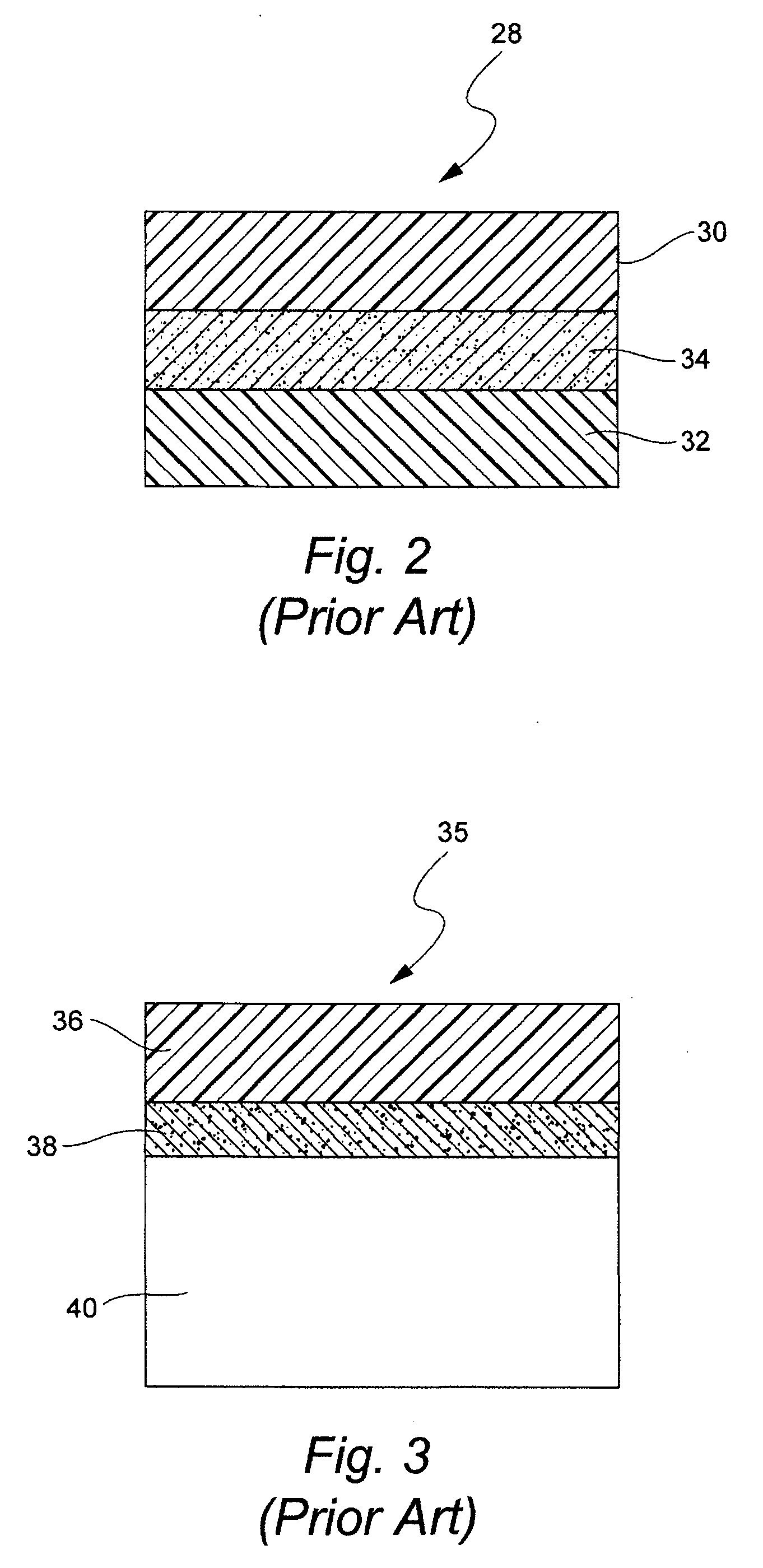Electrical heater with particular application to humidification and fluid warming
a heater and electric technology, applied in the field of electric heaters, can solve the problems of increasing the size and weight of the device, increasing the risk of leakage between the sealed components, and difficulty in installing the water tub for some users, and achieve the effect of reducing the number of parts and simple assembly process
- Summary
- Abstract
- Description
- Claims
- Application Information
AI Technical Summary
Benefits of technology
Problems solved by technology
Method used
Image
Examples
tenth embodiment
Heater Element Tenth Embodiment
[0074]Referring to FIG. 4j, the heater element circuit may be formed of conductive ink(s) 44, and a film or foil 43 may locate, connect, and / or thermally protect a thermal sensor 90, 94, e.g. a thermistor. The thermal sensor may then be overmolded 57 to control the thermal properties of the sensor, and / or to insulate the sensor from the water of a humidifier tub.
eleventh embodiment
Heater Element Eleventh Embodiment
[0075]As shown in FIG. 4k, the heater element may be either a printed film heater element 72, a stamped film heater element 73, and / or an overmolded heater element 75 and may be formed in a shape, for example a spiral, that is configured to cause differential heating to thereby cause water currents to form. For example, the heater element may be configured to create a swirling flow. As another example, the heater element may be formed with portions causing differential heating in areas of a humidifier where water flow may tend to be reduced, or stagnant, compared to other portions of the humidifier.
[0076]In the embodiments discussed above, any suitable molding resin may be used, including such resins as polycarbonate, polycarbonate ABS blends such as Astaloy™, polyethylene and polypropylene. The molded object 46 may be formed using extrusion molding or injection molding techniques or any other appropriate molding techniques. The molded object 46 com...
first embodiment
Control System First Embodiment
[0092]The level of heating by the in-mold heater elements may be controlled using a temperature sensor such as a thermistor or thermocouple. In a sample embodiment shown in FIG. 11, the in-mold heater 72 includes one or more thermistors 90, 92 electrically in series with the power supply and the printed conductive ink 44 on the film 42. Depending upon the application, a positive temperature coefficient (PTC) thermistor or a negative temperature coefficient (NTC) thermistor may be used to control the level of heating. For example, a PTC thermistor operates to decrease the heating power to the heater element as the temperature increases towards the desired temperature. A PTC thermistor may be used in a respiratory humidifier device.
PUM
 Login to View More
Login to View More Abstract
Description
Claims
Application Information
 Login to View More
Login to View More - R&D
- Intellectual Property
- Life Sciences
- Materials
- Tech Scout
- Unparalleled Data Quality
- Higher Quality Content
- 60% Fewer Hallucinations
Browse by: Latest US Patents, China's latest patents, Technical Efficacy Thesaurus, Application Domain, Technology Topic, Popular Technical Reports.
© 2025 PatSnap. All rights reserved.Legal|Privacy policy|Modern Slavery Act Transparency Statement|Sitemap|About US| Contact US: help@patsnap.com



